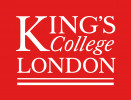© Pint of Science, 2025. All rights reserved.
Have you ever wondered if snowflakes really are all the same? Or what exactly happens in our body when we take medicine? Tonight we will satisfy your curiosity! We'll take a look at how the smallest parts of nature fit together to form our experience of life. We'll explore the world around us and inside our bodies on a whirlwind tour of cutting edge research into the tiny side of life.
Let it Snow! The Science of Snow Crystals
Professor Carla Molteni
(Professor of Physics, Kings College London)
Snow crystals are renowned for their complex symmetric geometries branching out from the edges of a hexagonal core. Different shapes develop depending on the conditions in the clouds, such as temperature and humidity. However, there are still many aspects related to how water molecules assemble to create snow crystals that are far from being fully understood. I will discuss the physical principles behind the growth of snow crystals and show how state-of-the-art computer simulation methods can help solve some of the puzzles behind their fascinating structures.
Self Assembly of Soft Matter
Dr. Chris Lorenz
(Reader of Biophysics and Soft Matter, King's College London)
The self-assembly of molecules is the process by which they adopt a defined arrangement without external intervention. Molecular self-assembly is a fundamental process in biological systems in the function of cells. This same process has also now been adopted as the foundation of bottom-up approaches in nanotechnology. I will introduce the forces that drive this self-assembly process and how computer simulations to understand self-assembled structures depend on their constituent molecules. In doing so, I will touch on examples of molecular self-assembly in drug delivery & biology.
Map data © OpenStreetMap contributors.

